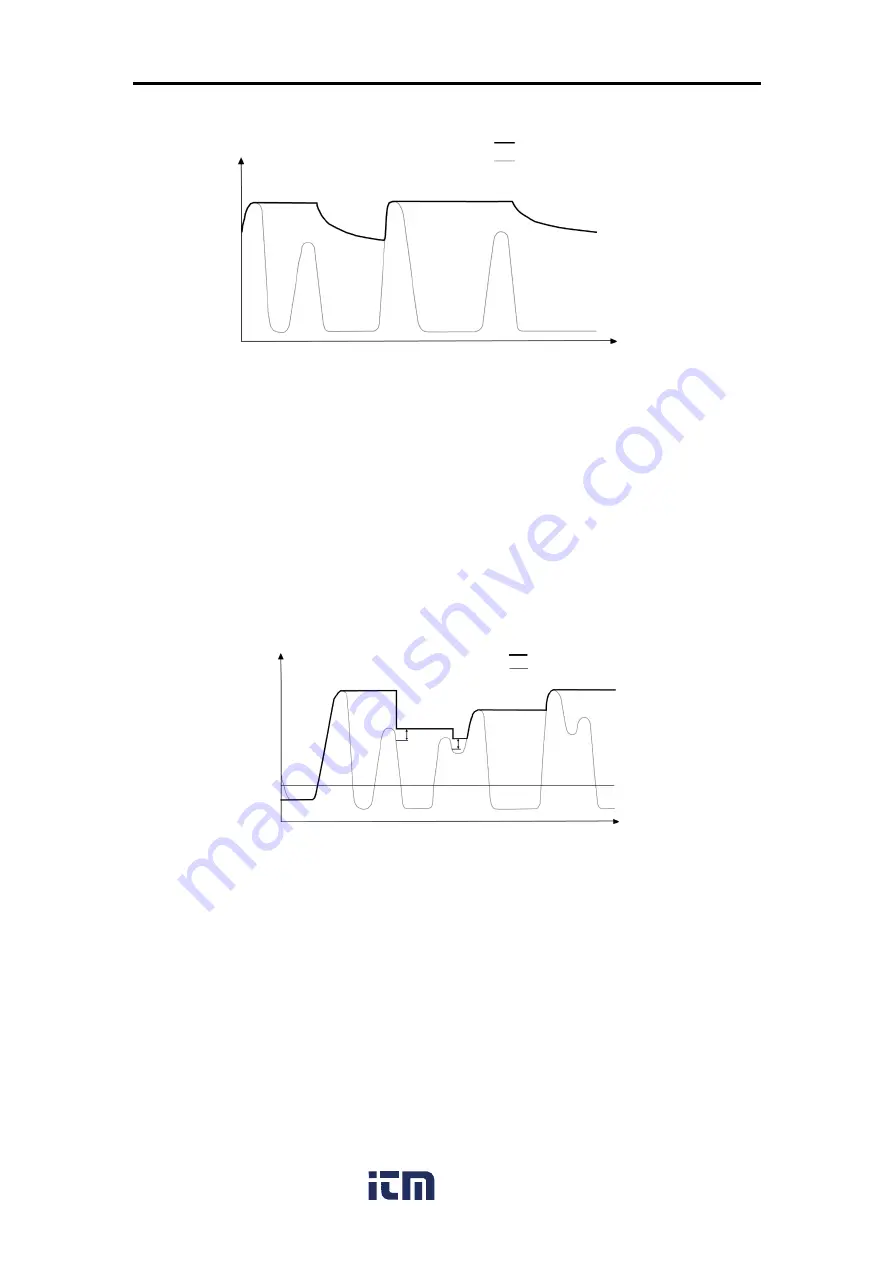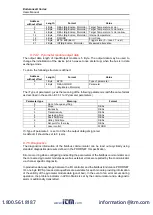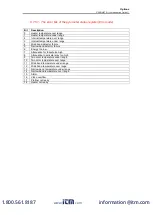
Endurance® Series
Users Manual
42
Figure 31: Average Time Dependent Signal Drop (averaging mode)
7.3. Advanced Peak Hold
This function searches the sensor signal for a local peak and writes this value to the output
until a new local peak is found. Before the algorithm restarts searching for a local peak, the
object temperature has to drop below a predefined threshold. If the object temperature raises
above the held value which has been written to the output so far, the output signal follows the
object temperature again. If the algorithm detects a local peak while the object temperature is
currently below the predefined threshold the output signal jumps to the new maximum
temperature of this local peak. Once the actual temperature has passed a peak above a
certain magnitude, a new local peak is found. This magnitude is called hysteresis.
The threshold is set by means of the programming command <C>, for hysteresis use the
command <XY>.
Figure 32: Advanced Peak Hold
7.4. Valley Hold
This function works similar to the peak hold function, except it will search the signal for a
minimum. The output signal follows the object temperature until a minimum is reached. The
output will
hold
the minimum temperature value for the selected duration of the valley hold
time. Once the hold time is expired, the valley hold function will reset and the output will
resume tracking the object temperature until a new valley is reached. The range for the valley
hold time can be set from 0.1 to 300.0 seconds, whereas just 0.1 - 299.9 seconds will be
interpreted as valley hold duration. A value of 300.0 seconds indicates that valley hold post
processing depends on an external trigger signal. A low level input (GND) at external input
(Trigger) will promptly interrupt the valley hold function and restarts the valley holding with the
current temperature reading.
output temperature
object temperature
Temp
Time
output temperature
object temperature
hysteresis
th
re
sh
old
Temp
Time
www.
.com
information@itm.com
1.800.561.8187
















































